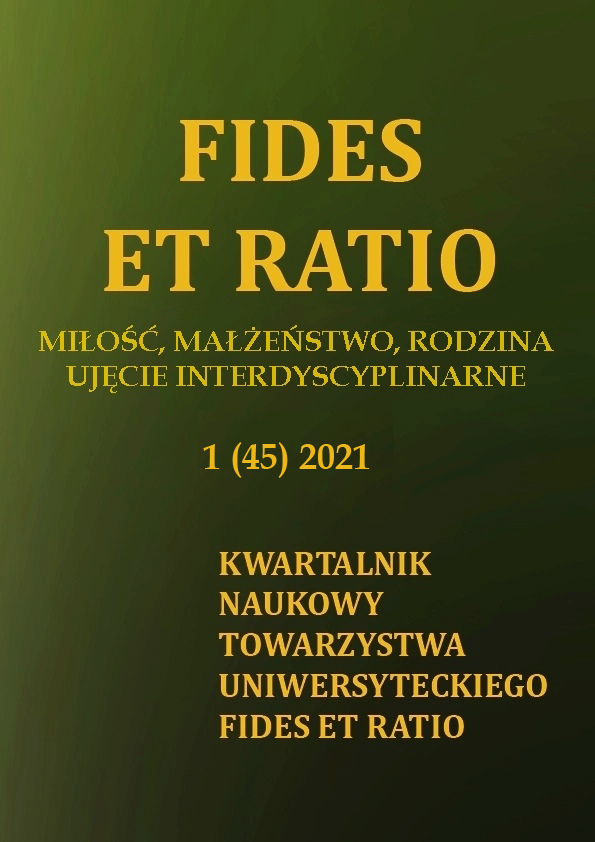Abstract
This article outlines the changing concept of understanding schizophrenia. Formerly, in the context of systemic family therapy, the cause of this illness was seen in the reaction of the weakest family member to the presence of the so-called schizophrenogenic mother. However, according to the neurodevelopmental hypothesis, it is now accepted that the development of schizophrenia is
a consequence of abnormal foetal development. This knowledge sheds new light on the understanding of the etiopathology of this disorder, thus removing the stigma from the families of sick people and opening an effective path of systemic therapy for families of people with schizophrenia.
References
AAddington, J.M.A. (2005). Three-year outcome of family work in an early psychosis program, Schizophrenia Research, 79, 107-116.
Andreasen, N.C. (2010). The lifetime trajectory of schizophrenia and the concept of neurodevelopment, Dialogues in Clinical Neuroscience, 3 (12), 409–415.
Amaresha, A.C., Venkatasubramanian, G. (2012). Expressed emotion in schizophrenia: an overview, Indian Journal of Psychological Medicine, 34 (1), 12–20.
Bateson, G., Jackson, D.D., Haley J. & Weakland, J. (1956). Toward a Theory of Schizophrenia, Behavioral Science, vol.1, 251-264.
Chrząstowski, S. (2014). Nie tylko schemat: praktyka systemowej terapii rodzin, Warszawa: Wydawnictwo Paradygmat.
De Barbaro, B. (1999a). Schizofrenia w rodzinie, Kraków: Wydawnictwo Uniwersytetu Jagiellońskiego.
De Barbaro, B. (1999b). Wprowadzenie do systemowego rozumienia rodziny, Kraków: Wydawnictwo Uniwersytetu Jagiellońskiego.
Dixon, L., Adams, C., Lucksted, A. (2000). Update on Family Psychoeducation for Schizophrenia, Schizophrenia Bulletin, 1 (26), 5-20.
Feinstein, A. (2010). A History of Autism. Conversations with the Pioneers, Chichester: Wiley-Blackwell.
Foley, P.B. (2019). Dopamine in psychiatry: a historical perspective, Journal of Neural Transmission, 126, 473-479.
Genderson, M.R., Dickinson, D., Diaz-Asper, C. M., Egan, M. F., Weinberger, D.R., Goldberg, T. E. (2007). Factor analysis of neurocognitive tests in a large sample of schizophrenic probands, their siblings, and healthy controls, Schizophrenia Research, 1-3 (94), 231–239.
Goldenberg, H., Goldenberg, I. (2006). Terapia rodzin, Kraków: Wydawnictwo Uniwersytetu Jagiellońskiego.
Goldstein, M.J., Miklowitz, D.J. (1995). The effectiveness of pychoeducational family therapy in the treatment of schizophrenic disorder, Journal of Marital and Family Therapy, 4 (21), 361-376.
Harrington, A. (2012). The fall of the schizophrenogenic mother, The Lancet, 379 (9823), 1292-1293.
Hartwell, C.E. (1996). The Schizophrenogenic Mother Concept in American Psychiatry, Psychiatry, 3 (59), 274-297.
Johnston, J. (2013). The ghost of the schizophrenogenic mother, Virtual Mentor, 9 (15), 801-805.
Kordas, W., Kokodyńska, K., Kurtyka, A., Sikorska, I., Walczewski, K., Bogacz, J. (2015). Rodzina wobec schizofrenii – grupa psychoedukacyjna w programie pilotażowym, Psychiatria Polska, 6 (49), 1129–1138, doi: http://dx.doi.org/10.12740/PP/38934.
Lipska, B.K. (2004). Using animal models to test a neurodevelopmental hypothesis of schizophrenia, Journal of Psychiatry & Neuroscience, 4 (29), 282-286.
Morris, J.A. (2012). The fall of the schizophrenogenic mother, The Lancet, 14, 380(9837), 110.
Murray, R.M., Lewis, S.W. (1987). Is schizophrenia a neurodevelopmental disorder?, British Medical Journal (Clinical Research Ed.), 295 (6600), 681–682.
Namysłowska, I. (2000). Terapia rodzin, Warszawa: Wydawnictwo Instytutu Psychiatrii i Neurologii.
Neill, J. (1990). Whatever became of the schizophrenogenic mother?, American Journal of Psychotherapy, 4 (44), 499-505.
Pietras, T., Witusik, A., Panek, M., Rodak, J., Szemraj, J. (2012). Neurorozwojowy paradygmat patogenezy niepełnosprawności intelektualnej, (w:) K. Bobińska, T. Pietras, P. Gałecki (red.), Niepełnosprawność intelektualna-etiopatogeneza, epidemiologia, diagnoza, terapia, 93-110, Wrocław: Wydawnictwo Continuo.
Seeman, M.V. (2009). The Changing Role of Mother of the Mentally Ill: From Schizophrenogenic Mother to Multigenerational Caregiver, Psychiatry, 72 (3), 284-294.
Stahl, S.M. (2013). Stahl’s Essential Psychopharmacology. Neuroscientific Basis and Practical Applications, New York: Cambridge University Press.
Thornicroft, G., Tansella, M. (2010). W stronę lepszej psychiatrycznej opieki zdrowotnej, Warszawa: Wydawnictwo Instytutu Psychiatrii i Neurologii.
Weinberger, D.R. (1987). Implications of normal brain development for the pathogenesis of schizophrenia, Archives of General Psychiatry, 44 (7), 660–669.

